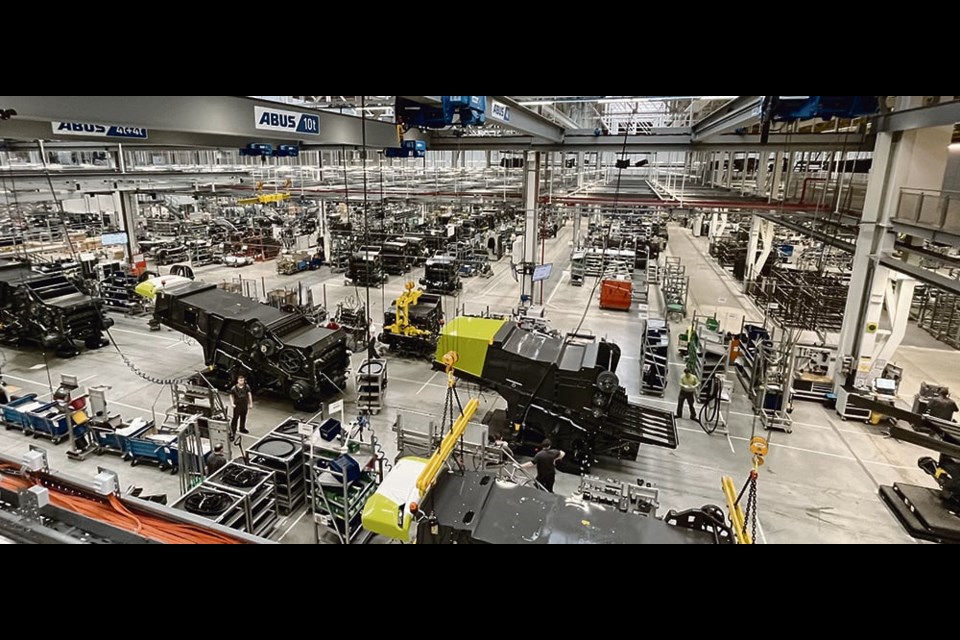HARSWINKEL, Germany — When Claas began building its first mower/thresher/binder units in the late 1930s, it would have been hard to imagine that the progeny of these machines would be constructed inside a facility that has 54 acres under a roof.
It also would have been hard to imagine machines this big; the hopper doors wouldn’t have been able to open under the roof. In fact, the harvesters didn’t even have doors — or hoppers, for that matter.
The 110-year-old company has just updated its combine facility in Harsewinkel, Germany, much of which dated back to the early 1950s.
While most of the largest Lexion machines that North American farmers are familiar with hail from the Claas of America factory in Omaha, Nebraska, more than 50 percent of those machine’s 15,000 or so parts are assembled there, the company produces a wide range of machines in its European headquarters in Germany.
Claas began building self-propelled combines in 1952, with introduction of the Hercules, later the SF, under a roof that was less than 14 feet high in places. That would prove tight for today’s machines and even its largest four-wheel drive tractors, the Xerion, and forage harvesters, which are also built at the newly revamped facility.
The timing for an update to the facility, beginning in 2020, worked well, as much of the world, especially manufacturing, felt the effects of COVID-19. Completed in 22 months, the company kept the overall footprint of the factory, but levelled 161,000 sq. feet of it for the new assembly line. And the new roof? It’s 45 feet high.
At $63 million, the investment paid for a lot of modernization beyond the building’s shell, including in-floor guidance for semi-autonomous “alligator” robotic units that ferry combine chassis around the facility like giant metal snowballs growing larger with every foot travelled.
It also allowed the company to move off dedicated assembly lines for each model-type of machine. Now all combines, from the all new Trion and the biggest 790 horsepower Lexion, to the 205 h.p. Dominator or the 70 h.p. Tiger can be assembled more efficiently than before.
“We don’t build a bunch of one model and then (retool) for another one and build those. We build as the dealers and their farmers order them. It avoids delays and having inventories to manage of machines built (on speculation),” said Shoushen He of Claas in Harsewinkel.
Staff are trained and certified to build every machine on the assembly line, no matter what appears in front of them.
“It is far more efficient and provides a lot of diversity for our people working on the floor,” she said.
Today about 1,600 people work on the plant floor, with about 2,200 overall, assembling about 25 combines each day, “two to three” tractors and “eight or nine” forage harvesters.
“It is also a much brighter facility now. Air quality is better. And we can open the (hopper doors) on the biggest machines now,” she said.

